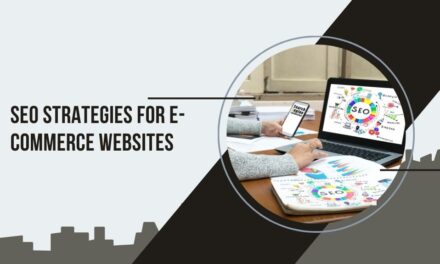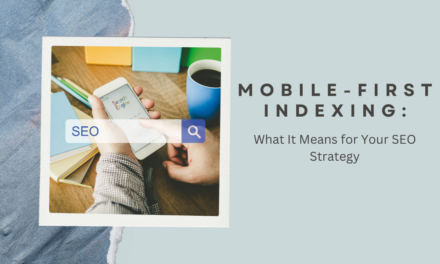In the fast-paced online retail landscape today, conventional SEO methods are insufficient to maintain the competitiveness of e-commerce companies. With the ongoing expansion of the online environment, predictive SEO has surfaced as a forward-thinking approach, enabling e-commerce companies to foresee changes in consumer habits, new product trends, and seasonal demand. Instead of merely responding to changes, predictive SEO enables e-commerce sites to anticipate these shifts, aligning their products and content with future consumer interests.
Predictive SEO combines data analytics, search trend analysis, and machine learning to develop a proactive online retail strategy. This is particularly valuable for product-based businesses looking to enhance their visibility, improve conversion rates, and gain a competitive edge. Throughout this article, we’ll explore how predictive SEO benefits e-commerce, focusing on data-driven forecasting, effective keyword strategies, content optimization, and targeted advertising. By understanding these strategies, e-commerce companies can drive consistent growth and make informed business decisions that align with customer demand.
Understanding Predictive SEO: The Basics for E-commerce
Predictive SEO enables businesses to anticipate what their customers will want before they search for it. Unlike traditional SEO, which relies on existing search behavior to optimize content and keywords, predictive SEO looks forward. By analyzing past data and identifying patterns, predictive SEO forecasts future search trends and consumer behaviors. This means that e-commerce businesses can adjust their strategies based on predicted consumer interests and emerging product trends, enhancing their online retail strategy with forward-looking insights.
A forecasting SEO strategy employs resources such as Google Trends, search engine analytics, and a range of data analytics platforms to gain insights into potential future consumer searches. Armed with this information, companies can more effectively adjust their product offerings and marketing strategies to take advantage of these upcoming needs. For instance, if seasonal forecasts indicate a rise in inquiries for “summer camping equipment,” an e-commerce store might begin enhancing its website content, item descriptions, and ads to match this expected demand. In doing this, they align with consumers’ directions, securing a competitive edge over those who remain with reactive methods.
Leveraging Data Analytics to Forecast Consumer Demand
Data analytics is the foundation of predictive SEO. By examining historical sales data, website traffic, social media activity, and seasonal trends, e-commerce businesses can identify patterns and make informed forecasts about future demand. Data from platforms such as Google Analytics and e-commerce tracking tools allows businesses to assess which products sell the most during specific times of the year, analyze customer demographics, and determine the effectiveness of past marketing campaigns.
For instance, examining customer buying patterns from previous holiday periods can uncover which items are expected to be trending in future seasons. Seasonal forecasts derived from this analysis allow companies to modify their product and marketing tactics accordingly. Additionally, analyzing social media trends and digital discussions can uncover new consumer preferences. When a new fashion accessory or gadget becomes popular on platforms such as Instagram or TikTok, an e-commerce company can leverage predictive SEO to capitalize on that trend promptly. By integrating these different data sources, companies can enhance their strategic decisions regarding inventory management, promotional activities, and website enhancements to more effectively satisfy consumer expectations.

Integrating Predictive SEO into Product Planning and Inventory Management
Product planning and inventory management are critical for e-commerce success, and predictive SEO provides insights that help optimize these processes. Using predictive insights, businesses can anticipate demand for specific products, allowing them to stock inventory accordingly. For instance, if data indicates a rising trend in eco-friendly products, a retailer can increase stock levels of sustainable items to capitalize on this interest. This proactive approach to inventory not only ensures product availability but also minimizes costs associated with overstocking or stockouts.
Besides having the appropriate products in stock, predictive SEO insights enable companies to synchronize their new product launches with consumer demand. If predictive analytics indicate that “minimalist home decoration” is set to be popular, an online store could introduce a collection of minimalist home decor products. This synchronization of product development with consumer trends enables companies to more effectively satisfy demand and differentiate themselves in a competitive market. Predictive SEO, consequently, not only guides inventory control but also supports long-term product strategy, making certain that product selections match upcoming market trends and customer preferences.
Identifying Emerging Keywords and Phrases to Boost Visibility
Keyword research is central to SEO, and predictive SEO takes it further by pinpointing emerging keywords that are likely to become popular. By identifying new keywords before they peak, businesses can capture early traffic, gaining visibility before these terms become too competitive. Platforms like Google Trends, Ahrefs, and SEMrush are useful tools for identifying these keywords, allowing businesses to analyze search volume, relevance, and projected growth over time.
For instance, if search analytics indicate a consistent rise in queries for “wireless charging pads,” an online retailer can enhance product pages and materials centered on this keyword, thereby drawing in visitors keen on this product type. Moreover, predictive SEO promotes the use of long-tail keywords that focus on particular consumer inquiries and represent more nuanced search intent. Long-tail keywords typically face lower competition and yield a higher conversion rate since they engage users who are further along in their purchasing journey. By recognizing and incorporating these new keywords into website content, e-commerce companies can enhance their search engine rankings, increase visibility, and draw organic traffic that aligns with their products.

Optimizing Content to Match Predicted Search Intent
Creating content that aligns with anticipated search intent is essential for engaging potential customers and improving visibility in search results. Predictive SEO insights help businesses understand what topics and queries are likely to be popular, allowing them to tailor content that speaks directly to those interests. For example, if data indicates a growing interest in “home office setups” due to remote work trends, an e-commerce site could create guides, blog posts, and product pages that address this topic in detail.
Optimizing content to align with future demand doesn’t only apply to blog posts or guides but extends to product descriptions, metadata, and category pages. By ensuring that product descriptions and metadata include keywords and phrases related to anticipated demand, e-commerce sites improve their relevance in search engines. This increases the likelihood of users finding their products when searching for related terms. The content should be engaging, informative, and relevant, addressing specific queries consumers are likely to have. Aligning content with predicted search intent not only enhances SEO but also fosters trust, as consumers are more likely to engage with a brand that provides relevant solutions.
Leveraging Predictive SEO in Paid Advertising for Higher ROI
Predictive SEO insights are equally valuable for enhancing the effectiveness of paid advertising campaigns. By identifying consumer trends and popular products, e-commerce businesses can tailor their ad copy, targeting strategies, and budget allocations to capitalize on high-demand items. For instance, if predictive data shows an increase in searches for “fitness wearables,” an e-commerce site specializing in fitness products could focus its ad spend on promoting relevant items, creating ad copy that resonates with this trend, and targeting audiences interested in fitness technology.
Along with enhancing ad copy, predictive insights can guide bidding strategies and budget allocation. Through predictive SEO, companies can make certain that their ads show up for popular keywords ahead of the competition, enhancing click-through rates and conversion opportunities. Retargeting tactics also gain from predictive SEO, enabling companies to pinpoint potential buyers who are inclined to finalize a purchase according to their browsing habits. This data-focused strategy for paid advertising enhances return on investment and enables businesses to remain flexible and responsive to changing consumer preferences, resulting in a greater ROI through precisely targeted ad campaigns.
Conclusion
In a fiercely competitive e-commerce environment, adopting predictive SEO enables companies to be proactive, addressing consumer needs even before they emerge. Utilizing data analytics, pinpointing new keywords, and aligning content and advertising strategies with anticipated search intent enables product-driven companies to enhance their online visibility, draw targeted visitors, and boost conversions. Predictive SEO goes beyond being a technical tactic; it offers a chance to connect with customers through a proactive method that foresees their requirements, delivering pertinent answers when needed.
Businesses adopting predictive SEO stand to gain a significant advantage, as they can continuously refine their online retail strategy to align with consumer expectations and market trends. Embracing predictive SEO fosters a customer-centric approach, where businesses understand what their audiences want and deliver value ahead of competitors. As predictive SEO technology advances, companies that harness its power will be better positioned for sustainable growth and success in the dynamic world of online retail.












